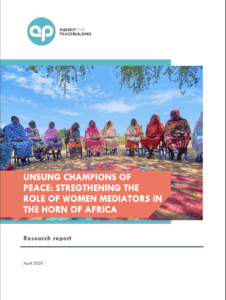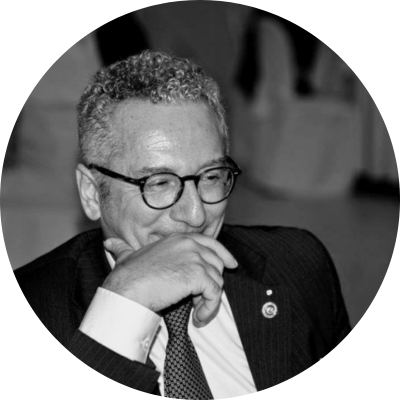Strengthening the role of women peacebuilders and mediators in the Horn of Africa
Regional networks of women mediators have recently sprung up in different parts of the world with the goal of promoting women’s participation. In the Horn of Africa, such a network does not presently exist. At the same time, women peacebuilders and mediators across the region are yet to be engaged to their full potential. These are the starting points for the present research, which has sought to better understand how women build peace and mediate in their own countries, and how they collaborate regionally.
OBJECTIVES
The research sought to better understand the motivations, opportunities and barriers affecting how women build peace and mediate in their own countries and the region, with the aim of exploring the feasibility of establishing a regional network of women’s mediators in the Horn of Africa.
EXPERTS
Bernardo Monzani
Shirleen Njoroge
PARTNERS
- Muslim Women Advancement for Rights and Protection
- Italian Ministry of Foreign Affairs and International Cooperation
Background
This is a necessary step to build a just and sustainable peace. In this regard, a useful tool could be a regional network of women mediators. Such networks have sprung up in different parts of the world with the goal of promoting a different kind of participation than what women have been able to achieve in the past. These networks work locally, regionally and internationally, supporting their members with training, technical assistance and, in some cases, also political support.
In the nascent and evolving landscape of regional networks, one such body for the Horn of Africa does not presently exist. At the same time, women peacebuilders and mediators across the region are yet to be engaged to their full potential.
In response to this, AP has been implementing the “Towards a Regional Network of Women Mediators in the Horn of Africa” project, whose main goal has been to contribute to strengthening the participation of women to processes related to peace and security in the Horn of Africa, in line with United Nations Security Council Resolution (UNSCR) 1325 on Women, Peace and Security (WPS). AP has been leading the implementation of the project with the support of Muslims Women Advancement of Rights and Protection (MWARP). The project has been funded by the Italian Ministry of Foreign Affairs and International Cooperation as part of Italy’s commitments under its fourth National Action Plan on WPS.
The research was a key activity of the project, exploring the challenges and opportunities for strengthening networking efforts within the region.
Findings
The research has in-depth, interesting findings. Some of them are aligned with what other studies have already found. Some of them add nuance and details to existing resources. There are also some new insights, which can hopefully increase the understanding of how networking processes have evolved, and are evolving, and what can make them more effective and impactful in the future.
The first part of the report focuses on country-level findings from Ethiopia, Kenya, Somalia and Somaliland, South Sudan and Sudan. Regional networking efforts start, in fact, from the experiences that women peacebuilders and mediators have in their own countries. These are very different from one country to another, reflecting the differences that exist in the legal and policy frameworks. Yet, there are also many commonalities, which are largely derived from the fact that, while history and cultures may differ, the situation of women can be remarkably similar regardless of where they live.
The second part analyses regional networking efforts, how they developed and what makes them effective (or not). The landscape of existing networks covering the Horn of Africa is a patchwork of differences and commonalities. Overall, these networks have not yet been able to help women peacebuilders and mediators overcome the limitations affecting their efforts. This points to the existence of factors that can either enable or hinder collaborative action. There are also gaps that are not yet been fully addressed by existing networks.
The report ends with some several recommendations, useful for both policy and practice.

































